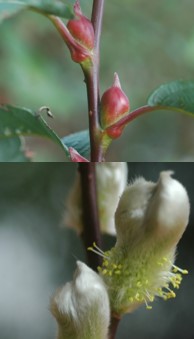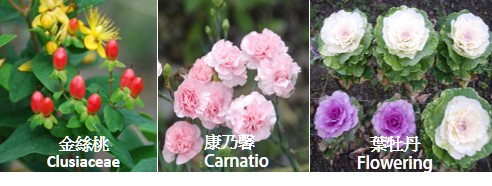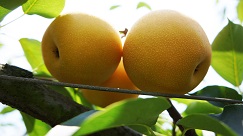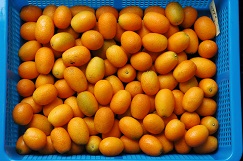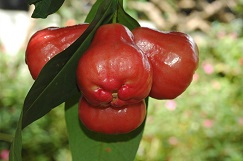|
|
Our objective is to engage in the selective breeding of crucial flowers and fruit trees in the Yilan region, as well as improve cultivation techniques for these crops. Regarding flowers, we have bred cat-tail willow varieties ‘Lanyang No.1’ and ‘Lanyang No. 2’. Both cat-tail willow varieties feature large red flower buds. Plant breeder’s rights for ‘Lanyang No. 2’ were obtained on November 7, 2011. We developed production and management techniques for growing cat-tail willow in pots, and combined floral art techniques to facilitate the diversified use of potted cat-tail willow and pruned branches of cat-tail willow. In addition, we researched and developed harvest and processing techniques for cat-tail willow, and established postharvest processing procedures to solve related problems in the industry. In recent years, we promoted the emerging flower industries on cold highelevation lands and actively counseled farmers of the Shiji and Nanshan Villages (in Datong Township) to shift the farmers’ focus from growing vegetables to flowers. In addition, we researched and developed technology that can regulate the flowering period of flowering quince, which improved the economic values of cultivating the flowering quince. We collected and developed native plants such as Radermachia sinica, Peperomia japonica, Farfugium japonicum, Aster indicus, Goodyera procera, Phyla nodiflora, Hedyotis strigulosa, and Clerodendrum kaemkpferi into ornamental plants with commercial value. Concerning fruit trees, liquid paraffin is used to coat grafted pears to increase the survival rate, and umbrellas and artificial pollination are employed during flowering periods to increase the fruit setting rate. We developed techniques that reduce the severity of water-core of pear fruits, and invented a postharvest storage technique for maintaining the freshness of ‘Chung-Shan-Yueh-Pa’ guava. In addition, we integrated kumquat cultivation, fertilizer management, and pest and disease prevention and control techniques to establish health management systems and postharvest processing procedures for kumquats. Furthermore, we created early-flower forcing culture system of wax apple to facilitate earlier flowering in the Yilan region, shifting the production period of wax apples earlier by 1–2 months and producing red high-quality wax apples with a low cracking fruit rate. 3 4 |
|---|


